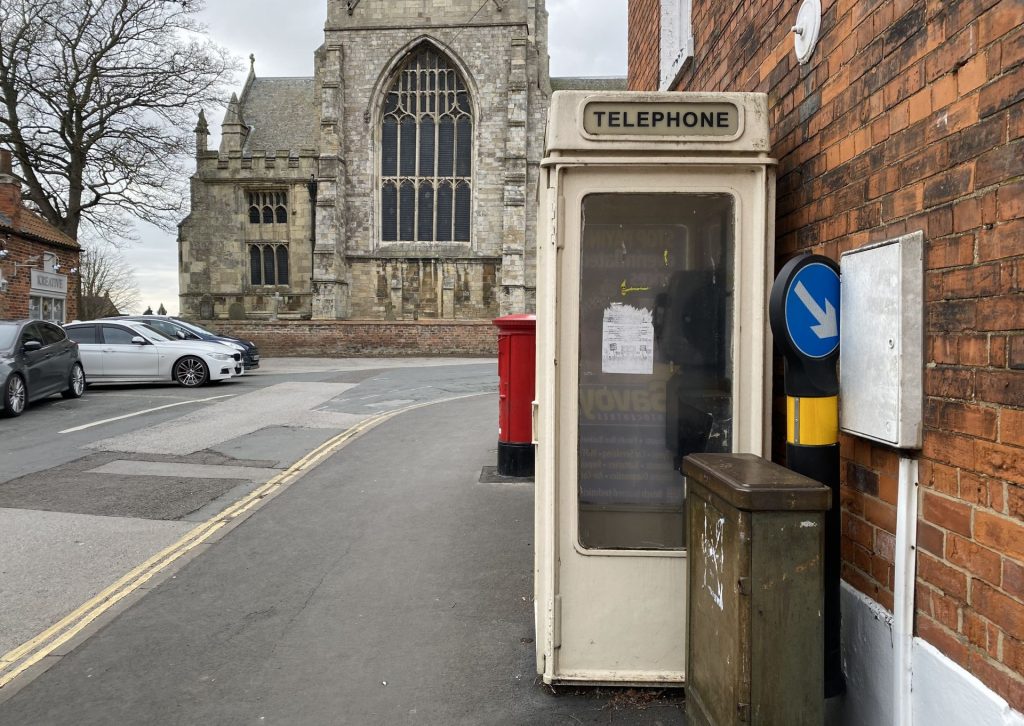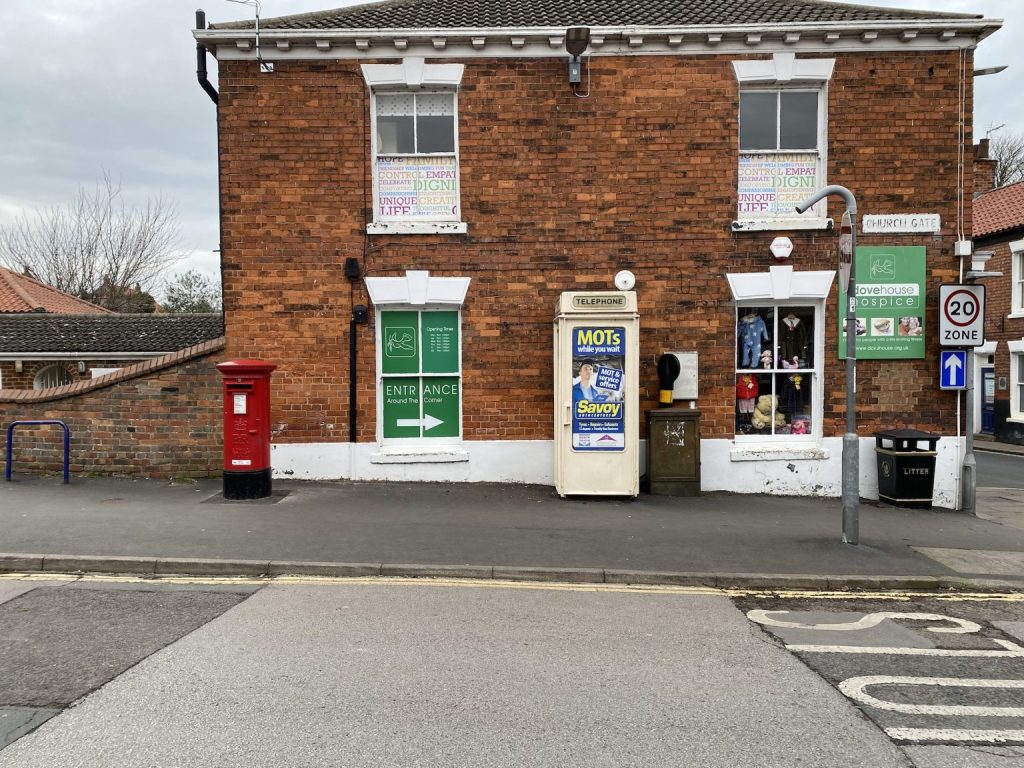This piece by Charlotte, a reflection on the recent listing of nine Hull and East Yorkshire K8 Telephone Boxes, was first published by Hull Is This, a local media platform in Hull, in March 2023.

The setting is a balmy evening sometime in the late 90s or early 2000s. A group of us are playing out in the village on the edge of Hull where I live, and between us we scrabble together enough change to ring home, ask my mum if I can stay out a bit longer, we’re going to a mate’s house to watch music videos on TV. Other days, when we’re feeling flush, we might spend our £1.50 on prank phone calls – the prank calls will outlive us using phone boxes as we migrate to Nokia 3210s and Sony Ericsson Walkmans, but we’ll still need to be frugal with 10p texts and £5 pay-as-you-go credit: “Going 2 Steph’s, c u l8r x”. But for now, the cream-coloured telephone box just off the main street, between the pub and the church, is our only source of communication for extending playing out. The phone box is a lifeline for making the most of lighter nights and pushing our curfews later and later. I’ll be in big trouble if I’m not home before the streetlights come on.
This is the memory that comes to mind when I think about my own relationship to Hull’s distinctive cream telephone boxes. Many others will have their own variations, stretching across several decades. The phone boxes are the site of moments both significant and routine: ringing a friend to join you in the pub; delivering sudden news, good and bad; calling a taxi from numbers pinned up inside the booth; stealing secret ‘I love you’s to first loves, away from the prying ears of nosy parents and annoying siblings; breaking up with the same first loves a few weeks later; more prank phone calls; sheltering from the rain.
Late last week it was announced that nine of Hull and East Yorkshire’s telephone boxes have been granted Grade II listed status following the advice of Historic England and a long-running campaign by the Twentieth Century Society. Like most of the area’s phone booths the rare K8 kiosks, designed by architect Bruce Martin in 1965-66, are painted cream as a mark of their independence from the British Telecom network. While the K8 phone boxes once numbered in their thousands, most were removed during privatisation in the 1980s and now only a relative handful remain. Described by Catherine Croft, director of the Twentieth Century Society, as ‘the last in the line of the classic telephone boxes’, they reflect the role of good design in serving people and communities. In Hull and its surrounds, the K8 phone boxes remain much-loved local landmarks.

As a historian of modern Britain and a proud Hull citizen, I’ve spent much of the last few years trying to better understand the places and parts of urban landscapes that mean the most to people in the city. Through oral histories and interviews and workshops, I’ve asked people to describe the settings that have shaped their lives, and the places that define Hull’s story and their own. Most of all this research has shown that it is everyday things that people engage with and care about most. Spaces and places that have been used by ordinary people and which reflect everyday working-class life and social history back to us today. In other words, the vernacular: the corner shop, the swimming baths, the cigarette kiosk, the bus stop. The phone box matters because it is layered with memories upon memories of daily life which weave personal stories together with collective histories of place. In Hull, the K8 telephone boxes are sites upon which people can and do narrate their own histories as well as those of the city itself – an independent city with its own phone network entwined with memories of growing up, getting together, and going out.
And more than that, Hull’s phone boxes also tell us something about how the city likes to see itself. It matters to people in Hull that we are considered to be unique or distinctive. Cream telephone boxes are a visible and tangible sign that the city, and therefore its people, are different to others – a city variably at ‘end of the line’, ‘a bit on the edge of things’, an idiosyncratic place with a ‘different resonance’. People might moan about being stuck to a specific internet provider, but still proudly answer visitors’ and onlookers’ questions about having an independent telephone network: “Don’t you have white phone boxes in Hull?” “Oh they’re cream actually?” “Why’s that then?”. We claim the phone boxes as our own by amassing a range of telephone box ephemera, mugs and money boxes and keyrings. I am guilty of all of the above.
In recent years projects like Telephonic Youth have begun to map people’s relationships with telephone boxes in the late 20th century. Historic England now invites members of the public to share their own knowledge of historic sites to ‘enrich the list’ with stories, photographs and more. Perhaps it’s time to add my own story of Hull’s K8 booths to these platforms. It will be just one person’s testament, among many thousands, to why these rare and cream-coloured telephone boxes are so special.